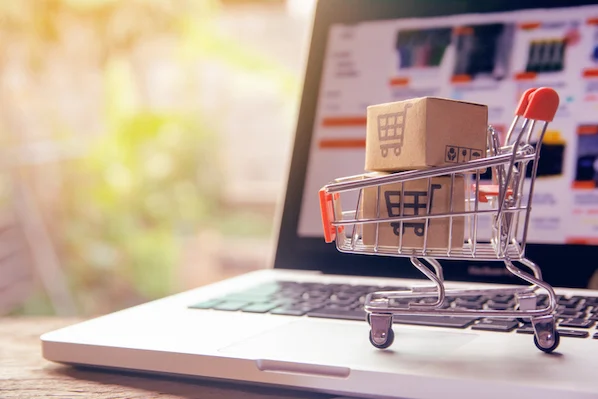What is E-Commerce?
E-commerce, often known as electronic commerce or online commerce, is the purchasing and selling of goods and services through the internet, as well as the financial and data transfers required to complete these transactions. E-commerce is frequently used to refer to the online sale of real goods, but it can also refer to any type of economic transaction that is made possible by the internet.
While e-business encompasses all aspects of running an online business, e-commerce focuses on the exchange of goods and services.
The first ever online sale took place on August 11, 1994, when a guy sold a CD by the band Sting to a friend using his website NetMarket, an American retail platform. This is the first instance of a consumer buying a product from a business over the Internet, or “e-commerce” as it is currently known.
Since then, e-commerce has progressed to make it easier to find and buy things through online shops and marketplaces. Independent freelancers, small enterprises, and large organisations have all benefited from e-commerce, which allows them to offer their products and services on a larger scale than traditional offline shopping.
How does E-Commerce Work?
The basics of online business are similar to those of an offline/retail store. The entire e-commerce process can be split down into three main elements or work processes on a larger scale:
Receiving Orders
It’s the first step, in which customers place orders via an e-commerce platform (website or online portal) and the merchant records them.
Processing Order Information
The second step involves processing and completing all of the order’s information. It is now ready for shipment.
Shipping
The delivery process is completed in the final step. In order to assure timely delivery to the consumer, all logistics components play a crucial role in this stage.
Types Of E-Commerce
Following are the different types of e-commerce models:
Business to Consumer (B2C)
The most common e-commerce model is business-to-consumer (B2C). It occurs when companies sell products, services, or information to customers directly. These days, there are countless virtual businesses and malls selling a wide range of consumer items online.
Business to Business (B2B)
A business selling a product or a service to another business, such as a manufacturer and wholesaler, or a wholesaler and a retailer, is known as B2B e-commerce. Business to business e-commerce isn’t aimed at consumers, and it frequently involves things such as raw materials, software, or combination products. B2B e-commerce allows manufacturers to sell directly to merchants.
Direct to Consumer (D2C)
The newest model of e-commerce is direct to consumer (D2C), and trends in this sector are constantly evolving. D2C refers to when a company sells directly to its end client rather than through a retailer, distributor, or wholesaler. Subscriptions are a popular D2C commodity, and social selling via platforms like Instagram, Pinterest, TikTok, Facebook, SnapChat, and others is popular for D2C sales.
Consumer to Consumer (C2C)
In consumer to consumer (C2C) e-commerce, consumers trade items, services, and information with one another online. These transactions are typically carried out via a third party that provides an online platform for the transactions like eBay, Etsy, Fiver, etc.
Consumer to Business (C2B)
When an individual sells their products or services to a business, this is known as consumer to business. Influencers who offer publicity, photographers, consultants, freelance writers, and other C2B professionals are included.
Create a Website to Start an E-Commerce Business
Creating a website is one of the first things you should do when starting an internet or e-commerce business. It can be a great way to promote your products and services and get them in front of the right people. Your website should be properly SEO (Search Engine Optimization) designed to attract users and purchasers via search engines (such as Google).
Your website should ideally include a list of the products or services you want to promote. For the visitors’ convenience, the sections should be interactive and user-friendly. On your online portal, you should include all of the important and helpful information about your company. Have a simple and easy-to-understand checkout section so people don’t abandon their cart.
Advantages and Disadvantages of E-Commerce
E-commerce offers the following advantages:
- A more efficient purchasing method
- Creation of a store and product listings
- Cost-cutting
- Marketing and advertising at a low
- Customer flexibility
- There are no reach constraints
- Compare products and prices
- Responding to buyer/market demands more quickly
- Various payment options
Disadvantages of e-commerce are listed below:
- Security
- Site crash
- No possibility of tried and tested product
- Late delivery
- Some products are difficult to buy online
- Lack of privacy
- Tax issues
- Legal issues
- Huge technological cost
- Shipping problems
- High labour cost
- Lack of personal touch
- Credit card fraud
- Dependency on the website
- Severe competition























